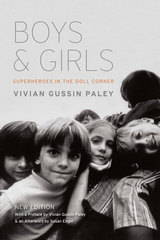
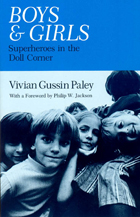
"I will admit my biases up front: having a three-year old daughter of my own made it impossible for this book to be anything but fun to read. I dare anyone who enjoys children not to enjoy this story about stories, this narrative about narratives."—Jerry Powell, Winterthur Portfolio

The public library is in the perfect position as a community resource to help bridge the gap between preschool and kindergarten; however, starting from scratch can feel daunting. In this guide, Baker combines her background in early childhood education with her experience as a youth services programming specialist to present a school readiness program that can be tailored for any public library. Based on the successful framework of her tried and tested original program, this book offers everything that a public library needs in order to get started, including
- A six-week schedule of detailed lesson plans which combine the best practices of the Every Child Ready to Read® (ECRR) Second Edition (talking, singing, reading, writing, playing) with nationally identified school readiness skills
- A six-month family calendar with activities to help parents engage their children in activities that foster early literacy and school readiness skills at home
- Tips for maintaining a collaborative relationship with early childhood stakeholders and policymakers to help maintain a program that fits the school readiness needs of the local community
- Specific examples of successful school readiness programs and partnerships from public library systems across the country
Baker's guide will help public libraries ensure that young children are ready for school from day one.
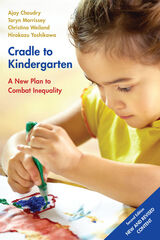
The U.S. government invests less in children under the age of five than do most other developed nations. Most working families must seek private childcare, which means that children from low-income households, who would benefit most from high-quality early education, are the least likely to attend them. Existing policies, such as pre-kindergarten in some states are only partial solutions. To address these deficiencies, the authors propose to overhaul the early care system, beginning with a federal paid parental leave policy that provides both mothers and fathers with time and financial support after the birth of a child. They also advocate increased public benefits, including an expansion of the child care tax credit, and a new child care assurance program that subsidizes the cost of early care for low- and moderate-income families. They also propose that universal, high-quality early education in the states should start by age three, and a reform of the Head Start program that would include more intensive services for families living in areas of concentrated poverty and experiencing multiple adversities from the earliest point in these most disadvantaged children’s lives. They conclude with an implementation plan and contend that these reforms are attainable within a ten-year timeline.
Reducing educational and economic inequalities requires that all children have robust opportunities to learn, fully develop their capacities, and have a fair shot at success. Cradle to Kindergarten presents a blueprint for fulfilling this promise by expanding access to educational and financial resources at a critical stage of child development.
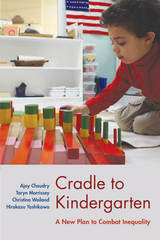
The U.S. government invests less in children under the age of five than do most other developed nations. Most working families must seek private childcare, which means that children from low-income households, who would benefit most from high-quality early education, are the least likely to attend them. Existing policies, such as pre-kindergarten in some states are only partial solutions. To address these deficiencies, the authors propose to overhaul the early care system, beginning with a federal paid parental leave policy that provides both mothers and fathers with time and financial support after the birth of a child. They also advocate increased public benefits, including an expansion of the child care tax credit, and a new child care assurance program that subsidizes the cost of early care for low- and moderate-income families. They also propose that universal, high-quality early education in the states should start by age three, and a reform of the Head Start program that would include more intensive services for families living in areas of concentrated poverty and experiencing multiple adversities from the earliest point in these most disadvantaged children’s lives. They conclude with an implementation plan and contend that these reforms are attainable within a ten-year timeline.
Reducing educational and economic inequalities requires that all children have robust opportunities to learn, fully develop their capacities, and have a fair shot at success. Cradle to Kindergarten presents a blueprint for fulfilling this promise by expanding access to educational and financial resources at a critical stage of child development.

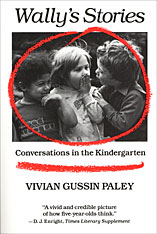
Teachers are often taught that young children are incapable of logical thought. Prone to fantasy and unruffled by inconsistency, preschool children are frequently baffled by the first lessons of early schooling. Trained to gently resist the child’s illogic, teachers sometimes create just the incomprehension and anxiety they mean to avoid. In Wally’s Stories, Vivian Paley shows that none of this need be so.
Wally’s Stories is itself a story: the story of the evolution of a kindergarten classroom in which Paley learned to stop fighting childish fantasy and instead make use of it to stimulate the very best brand of thinking her five-year-olds can muster. Stories also lie at the heart of her classroom: stories that are first told by one of the children, then transcribed by the teacher, and then acted out by the class in dramatic productions of their own design. Paley shows that in the course of creating their own dramatic world, five-year-olds are capable of thought and language far in advance of what they accomplish in traditional classroom exercises. The children’s stories also become a vehicle that they can use to explain themselves to their teacher and to one another. Together, teacher and children develop an unusual environment, one that is logical and literate, based on rules of fairness, friendship, and fantasy.
Vivian Paley’s book is as refreshing as her teaching method—a new kind of book about a new kind of classroom.


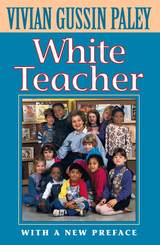
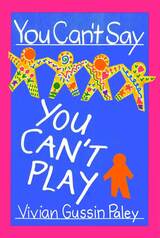
Who of us cannot remember the pain and humiliation of being rejected by our classmates? However thick-skinned or immune to such assaults we may become as adults, the memory of those early exclusions is as palpable to each of us today as it is common to human experience. We remember the uncertainty of separating from our home and entering school as strangers and, more than the relief of making friends, we recall the cruel moments of our own isolation as well as those children we knew were destined to remain strangers.
In this book Vivian Paley employs a unique strategy to probe the moral dimensions of the classroom. She departs from her previous work by extending her analysis to children through the fifth grade, all the while weaving remarkable fairy tale into her narrative description. Paley introduces a new rule—“You can’t say you can’t play”—to her kindergarten classroom and solicits the opinions of older children regarding the fairness of such a rule. We hear from those who are rejected as well as those who do the rejecting. One child, objecting to the rule, says, “It will be fairer, but how are we going to have any fun?” Another child defends the principle of classroom bosses as a more benign way of excluding the unwanted.
In a brilliant twist, Paley mixes fantasy and reality, and introduces a new voice into the debate: Magpie, a magical bird, who brings lonely people to a place where a full share of the sun is rightfully theirs. Myth and morality begin to proclaim the same message and the schoolhouse will be the crucible in which the new order is tried. A struggle ensues and even the Magpie stories cannot avoid the scrutiny of this merciless pack of social philosophers who will not be easily caught in a morality tale.
You Can’t Say You Can’t Play speaks to some of our most deeply held beliefs. Is exclusivity part of human nature? Can we legislate fairness and still nurture creativity and individuality? Can children be freed from the habit of rejection? These are some of the questions. The answers are to be found in the words of Paley’s schoolchildren and in the wisdom of their teacher who respectfully listens to them.
READERS
Browse our collection.
PUBLISHERS
See BiblioVault's publisher services.
STUDENT SERVICES
Files for college accessibility offices.
UChicago Accessibility Resources
home | accessibility | search | about | contact us
BiblioVault ® 2001 - 2024
The University of Chicago Press









